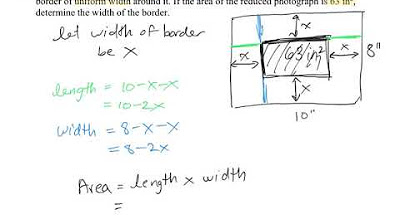|Determine H (Z) using Impulse invariant Method | solved examples
Summary
TLDRIn this detailed discussion, the speaker navigates a complex mathematical problem, focusing on the conversion of a formula involving square roots into a digital format. They evaluate various standard formulas and make necessary adjustments to derive a correct equation. The importance of sampling periods is emphasized, alongside the explanation of key terms such as transfer functions and numerator/denominator relationships. The session concludes with a summary of calculated values, illustrating the practical application of the concepts discussed, ultimately enhancing understanding for viewers interested in mathematical formulations in digital contexts.
Takeaways
- 😀 The script discusses converting a mathematical expression involving variables and constants into a digital form.
- 📏 The standard formula used in the calculation is introduced, emphasizing its components and structure.
- 🧮 The speaker simplifies the expression by identifying applicable formulas and terms.
- 🔍 The importance of realizing constants and variables in the equation is highlighted for accurate calculations.
- 💡 A correction is noted regarding the numerators in the formulas, stressing the need for adjustments.
- ✍️ The adjusted formula incorporates constants in a way that cancels out terms for simplification.
- 📈 The calculation of the transfer function is discussed, focusing on the values derived from the expression.
- 🔄 The sampling period is set to one second by default, establishing a standard for the calculations.
- 📊 Specific values are calculated, leading to conclusions about the function being analyzed.
- ✅ The final answer and its significance in the context of the problem are presented clearly.
Q & A
What is the main topic discussed in the transcript?
-The main topic is about converting a mathematical expression into digital form using a specific formula.
What does the term 'standard formula' refer to in the context of the transcript?
-The 'standard formula' refers to a mathematical equation used to compare and simplify terms in order to derive a specific relationship between variables.
Why can't some formulas be applied according to the discussion?
-Some formulas cannot be applied because the necessary conditions, such as the presence of certain terms or constants in the equation, are not met.
What is the significance of the terms 'numerator' and 'constant term' in this context?
-The terms 'numerator' and 'constant term' are crucial for determining the applicability of certain mathematical formulas to the given expression.
How is the expression simplified in the transcript?
-The expression is simplified by applying the formula for the square of a binomial and rearranging the terms to fit the standard formula.
What correction was noted regarding the formula used?
-It was noted that the formula initially used for the numerator needed correction; the correct term should include a division by '√2'.
What does 'sampling period' refer to in this context?
-The 'sampling period' refers to the time interval used in digital signal processing, which in this case defaults to one second.
What values are derived from the calculations presented?
-The calculations yield specific values for the transfer function, such as '0.453' and '-0.7497', which represent characteristics of the system being analyzed.
What is the final answer to the third question discussed?
-The final answer to the third question is represented as a transfer function, including terms like 'e^(-2√2)' and related values.
How does this transcript contribute to understanding mathematical concepts?
-The transcript provides a detailed step-by-step approach to applying mathematical formulas, enhancing comprehension of complex conversions and relationships in digital systems.
Outlines

Cette section est réservée aux utilisateurs payants. Améliorez votre compte pour accéder à cette section.
Améliorer maintenantMindmap

Cette section est réservée aux utilisateurs payants. Améliorez votre compte pour accéder à cette section.
Améliorer maintenantKeywords

Cette section est réservée aux utilisateurs payants. Améliorez votre compte pour accéder à cette section.
Améliorer maintenantHighlights

Cette section est réservée aux utilisateurs payants. Améliorez votre compte pour accéder à cette section.
Améliorer maintenantTranscripts

Cette section est réservée aux utilisateurs payants. Améliorez votre compte pour accéder à cette section.
Améliorer maintenantVoir Plus de Vidéos Connexes
5.0 / 5 (0 votes)






